All of this is so true .
I have observed my pets behaving differently when i dont follow these kind gestures !
10 Things We Do That Stress Our Dogs Out, and Hugging Them Is One of Them
As humans, we’re used to talking about stress. In fact, most of us experience it on a daily basis. But as strange as it sounds, dogs can also suffer from a similar kind of stress. A stressed dog will show several symptoms which can be seen in hyperactivity or apathy, changes in behavior, or repetitive behavior. It could even the way that we deal with these symptoms that’s causing the problem in the first place — even if you never meant to upset your four-legged companion.
But that’s why it’s important for you to know what stress means for a dog. And because we’re sure you want the best for your little buddy, Bright Side thought we’d do some research to better understand what to do and what not to do when it comes to stress and dogs. Don’t miss our bonus at the end of the article as well.
1. Leaving them alone for a long time
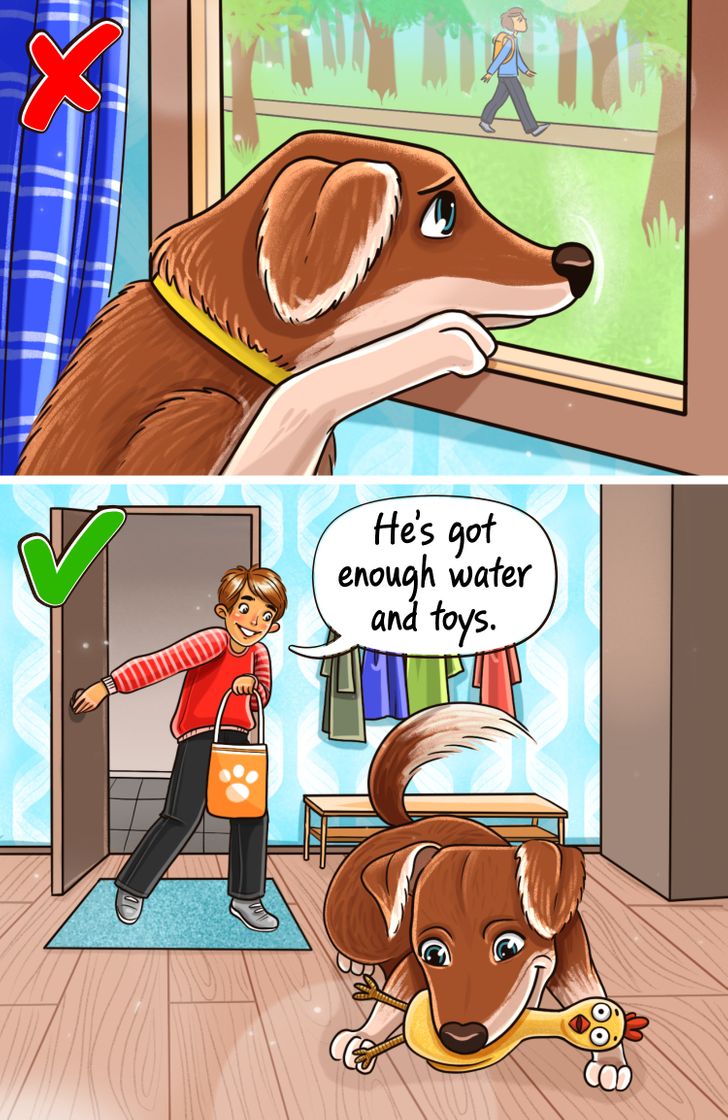
Separation anxiety or stress is very common in young dogs that are not yet used to being left alone. Very old dogs are also affected by separation anxiety because they lose their normal ability to take care of themselves. It manifests itself with destructive behavior, persistent barking, or howling when you go out or come back. Some dogs might even poop inside the house.
For them to get used to it, it’s recommended not to leave the pet alone for more than 6 to 8 hours. Before leaving, you should secure the doors and windows to prevent an escape, see that they have enough water and food available, and leave toys to entertain themselves with. Also, before leaving, you should ignore them for about 20 minutes. Do the same thing when you come back and don’t greet or pet the dog until they’ve calmed down. Then you can both spend some quality time together.
2. Taking them out with a very tight leash and not ever letting them run free
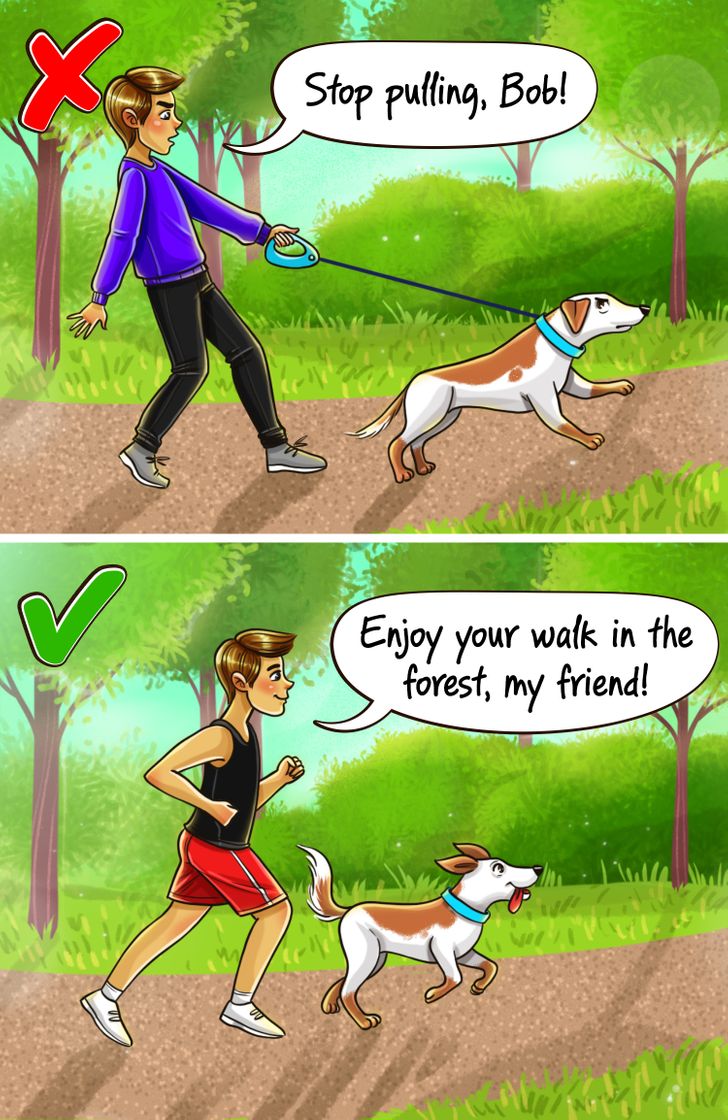
It’s a well-known fact that dogs need to exercise outdoors and love releasing energy while running. This is especially true for dogs that live in apartments and have no space to exercise at home. If your city doesn’t allow dogs to be walked unleashed, you should pay close attention to how tense the leash you’re using is. A tight leash can not only cause physical damage to your dog (think of back injuries, for example) but it also stresses them out. In the end, this can affect your dog’s behavior too.
Try to take your pet to a square, park, or open area where you can let go and allow them to run freely. It’s best to do this at least a couple of times a week to prevent your dog from stressing out and to keep them in good physical shape. If for whatever reason you can’t unleash them, make sure the leash you’re using is loose enough for the dog to feel free while running. Of course, it’s not an easy thing to do if we’re talking about a big dog, but still, there are many solutions out there. You can buy a training harness or a head harness, for example. These allow you to walk your pet without stressing them out.
3. Ruling with an iron fist
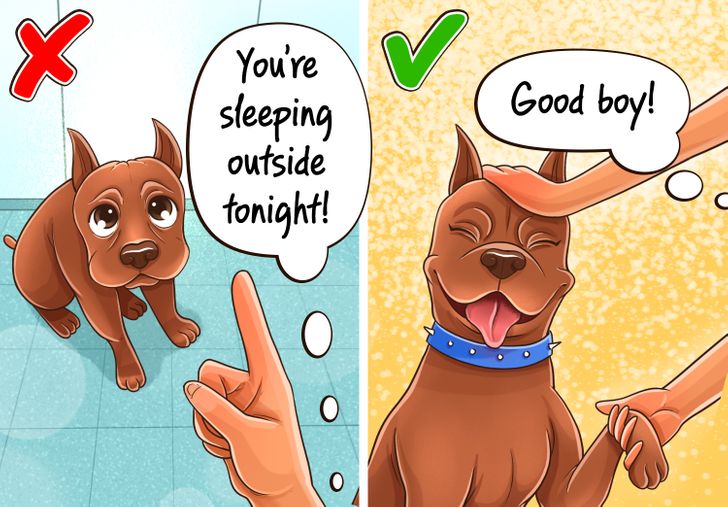
According to a study, dogs that are raised in a hostile environment are more likely to suffer from stress. Frequent punishments, yelling, pulling the leash, or forcing them to sit down by pressing on their back can cause anxiety. It can also make your dog develop a bad temper and be reluctant to play with other dogs.
Instead of being too tough, try positive reinforcement. When the dog obeys an order, congratulate it, pet it, or give it a treat. If it doesn’t obey your order as you’d hoped, never hit them or yell at them. Just firmly say, “No,” and then ignore it. By repeating this, the dog will end up understanding what you want from it.
4. Pretending to throw the ball
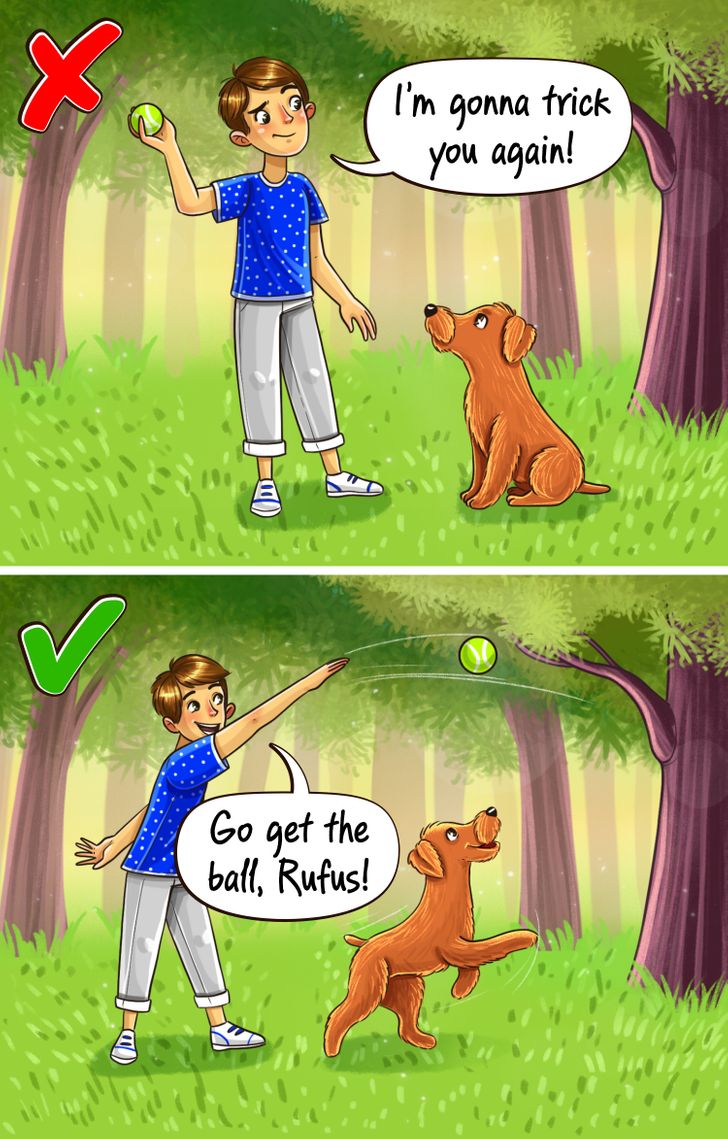
There’s nothing that makes your dog happier than when you play with them. Playing together creates an emotional bond between you and your dog. But there are some kinds of games that are only fun for humans. For example, when you pretend to throw a ball for your friend to catch but actually just hide it behind you. At first, the dog will be happy to go get it. But if you do the same thing over and over, the dog will start feeling anxious and confused. Clearly, they will no longer find it fun. Little by little, this behavior will make your pet lose trust in you.
Research has shown that playing with your pet has an effect on their cortisol levels. Cortisol, by the way, is the hormone that regulates stress. So don’t pull pranks on your dog. Play with the dog, throw the ball, and let them pick it up. You can also use this time to teach them other tricks, such as pawing.
5. Exposing them to very loud sounds
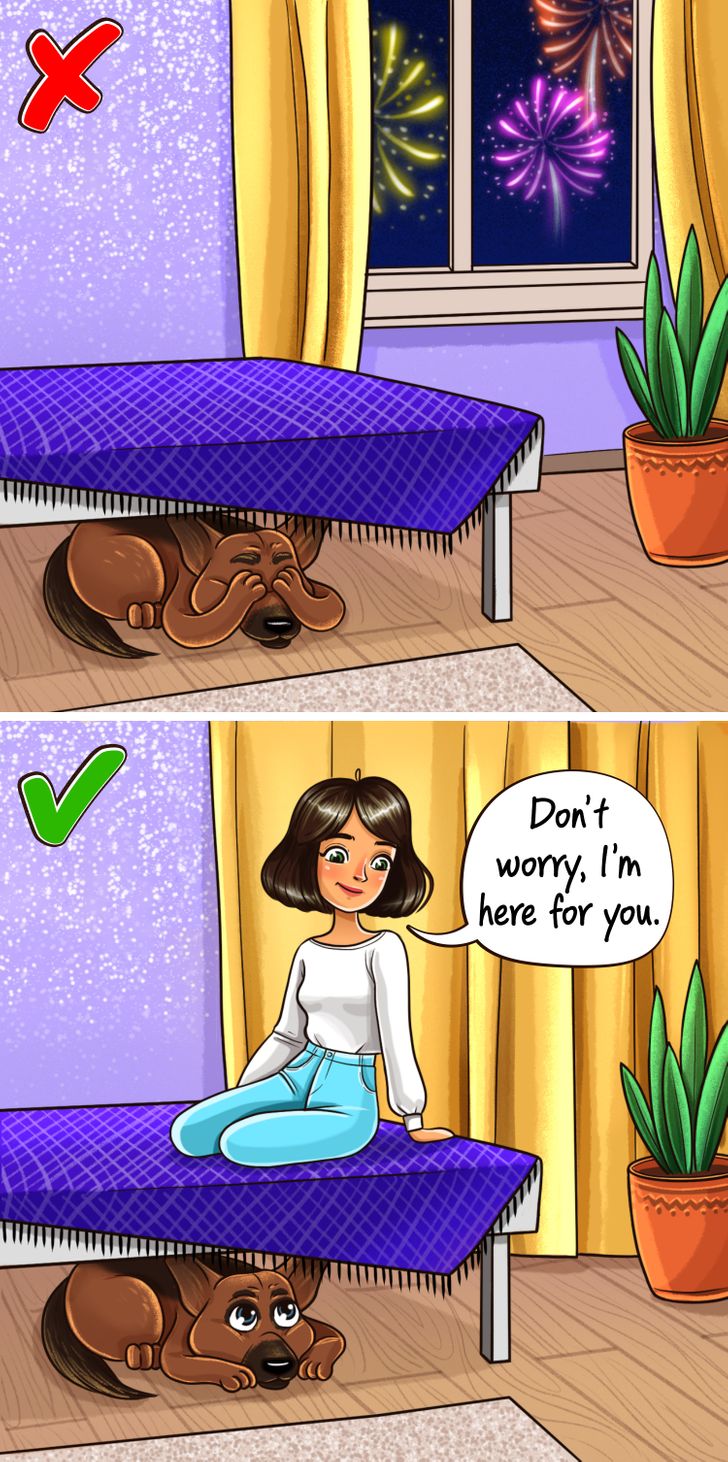
Being constantly exposed to very loud sounds, such as high pitches, strident music, firecrackers, traffic noise, a horn, or other similar sounds is stressful for anyone. The same goes for dogs. The difference is that they don’t know where the noise is coming from. So they just get scared, their heart rate increases, and their stress levels skyrocket. Imagine hearing sounds and not knowing where they were coming from!
To avoid them stressing out like that, it’s important for your pet to have a shelter to go to when they need to feel safe. It’ll probably choose the place itself: it could be under the bed, a table, or in a large box. Don’t try to get the dog out of their safe place. Let them calm down and come out on their own. Try to reduce their exposure to loud sounds, and if that’s not possible, try playing some soft music in the background.
6. Preventing them from sniffing out everything they want to sniff
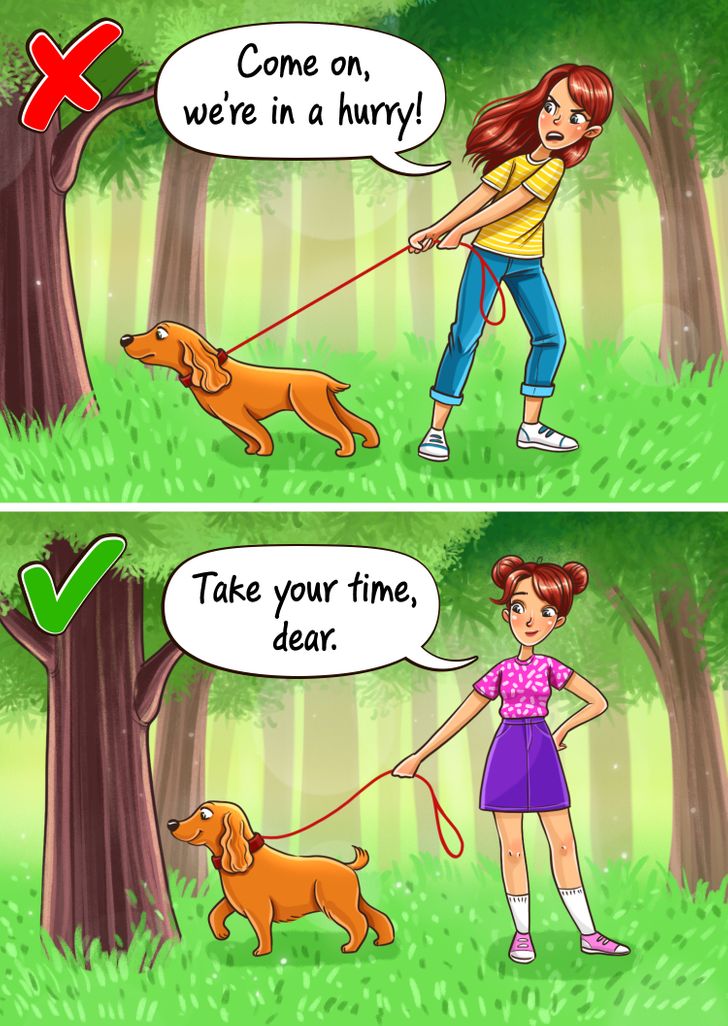
Your dog gets information from their environment and from other dogs by sniffing every corner as well as through the scent of other dogs. When you take them out for a walk, for example, and pull the leash to prevent them from sniffing, you’ll be depriving your friend of catching up with the world, so to speak.
A dog’s muzzle is a very special instrument and using it gives them a sort of second view of the world that surrounds them through their noses. It’s pretty amazing if you think about it. So next time you take them out, let them guide you and allow them to smell everything they come across. If the dog stops, be patient and wait for them to finish. Let them enjoy all the sniffing at ease.
7. Hugging them too much or touching their face
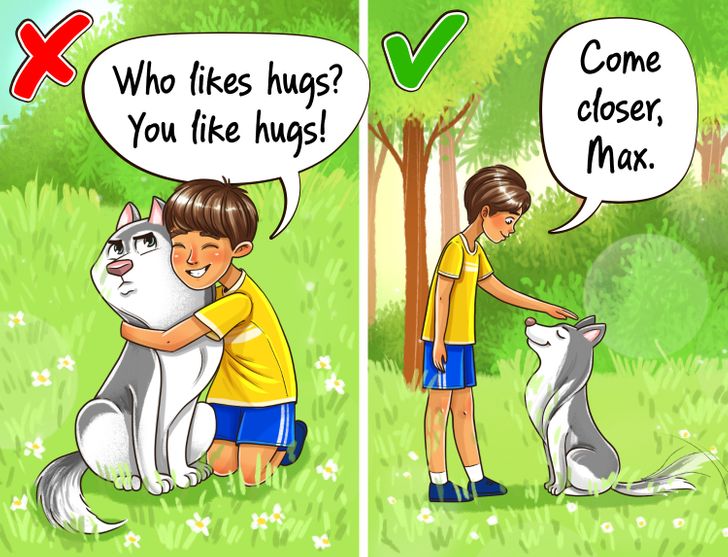
Demonstrations of affection are typically human. Dogs don’t understand them like we do. In fact, most show signs of discomfort, anxiety, or stress when we’re too affectionate with them. They also don’t like it when you touch or pet their face. Least of all, a stranger. When they see a hand fall, they can easily assume that they’re about to be beaten.
If you realize that when you hug them tightly or try to caress their face, they yawn, drop their ears, look away, grunt, or get up to leave, then they clearly don’t want that kind of pampering. Not all dogs have that. Some of them love to be cuddled and even ask for it. But if you see signs of the contrary, stop. It’s better to lower your hand to the height of their muzzle and let them come to you, slowly and calmly.
8. Using different words for the same kind of behavior
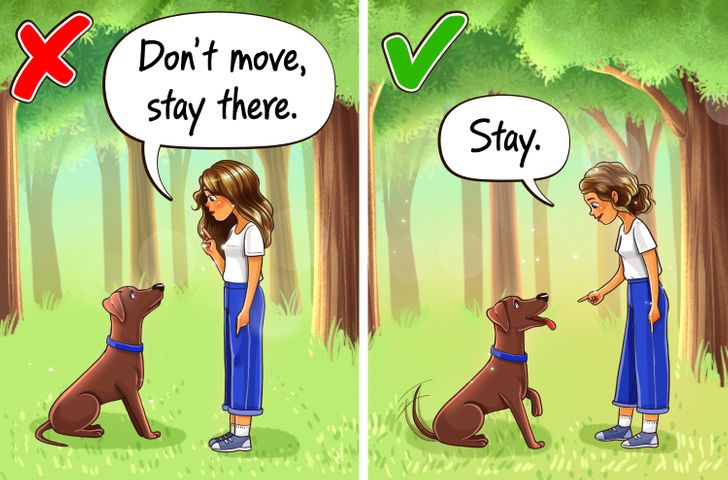
It’s normal to talk to your pet as though they understand everything you say. However, try to always use the same word for the same order: down, come on, stay, sit, come here, etc. Leave all synonyms aside. Your pet does not understand that by saying, “Bring this to me,” and “Go get that,” you’re trying to say the same thing. That means that when you use different words, the dog is going to feel confused because it will see that you want them to do something but won’t know what that is.
Make sure you control the tone of your voice when you give them an order. Pay close attention to your body language too. Your dog will respond much better to visual stimuli — pointing at objects or snapping the fingers are effective ways of communicating with them. Think about using repetition to your advantage too. Dogs love a routine, so don’t hesitate to spend a few minutes a day reviewing what you’ve taught them before.
9. Dressing them
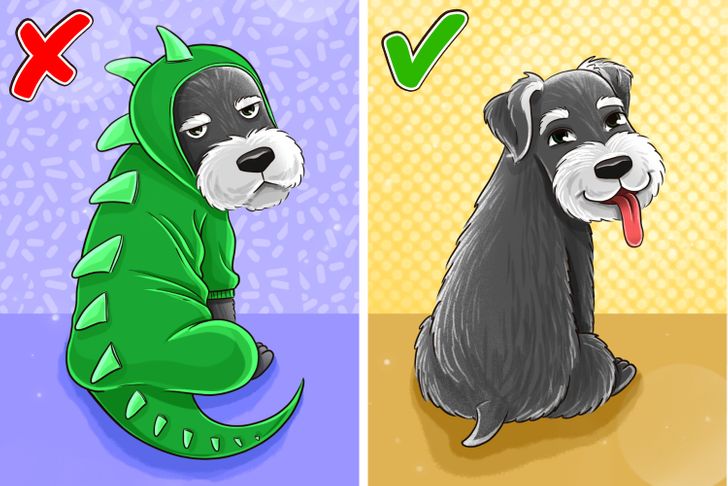
Dogs are generally more likely to accept wearing some pieces of clothing than cats are. Some breeds cope well, especially if the clothing helps them withstand the cold. But most dogs don’t even need it and actually find it extremely uncomfortable and frustrating.
You should watch how your friend reacts when you try to dress them. If they show clear signs of anger and want to run away, just let it go. Don’t force the dog to do things they don’t want to do. Not only can it cause them great stress, but it can also damage their skin due to the materials dog garments are made of.
10. Not following a routine
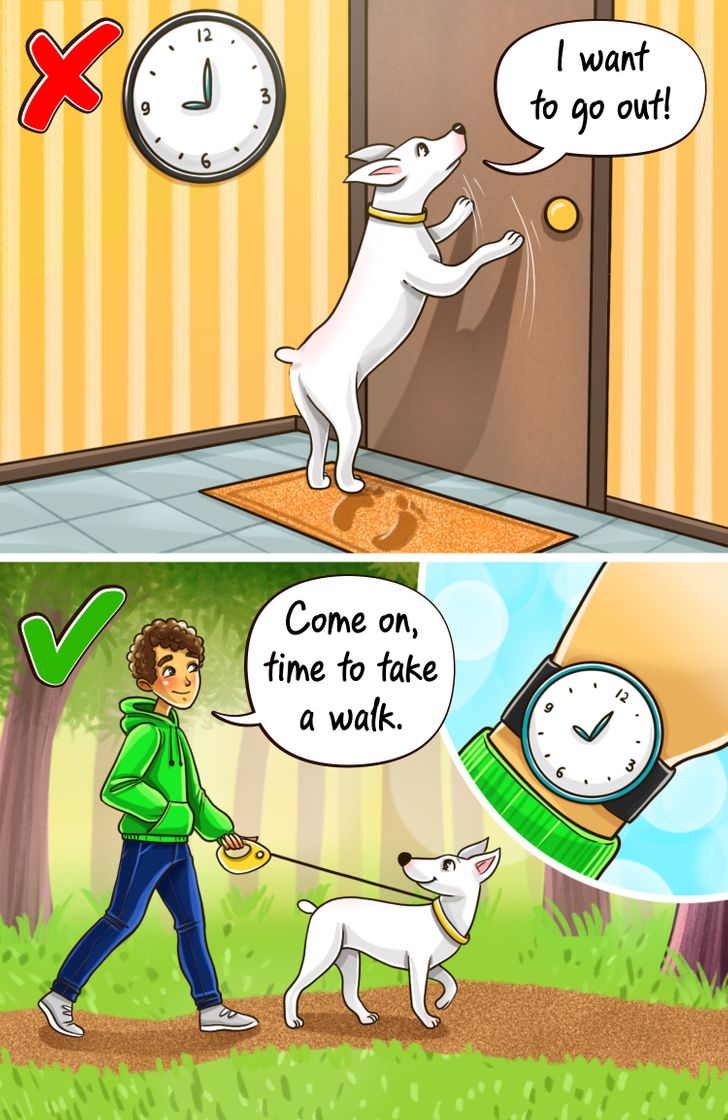
Dogs are animals that like habits. Maintaining a daily routine helps them feel happier, safer, and can even help them endure any future changes. On the other hand, animals that do not have an established routine tend to get stressed, depressed, and show anxiety in their daily behavior.
It’s always better to create a routine when the dog is still a puppy. Establish schedules for sleeping, eating, going to the bathroom, walking, and playing. This is important for you and your pet to reinforce your relationship. As long as you respect your dog’s schedule, you can introduce new activities without the fear of anything affecting their stability.
Bonus: If you’re stressed, your dog gets stressed too.
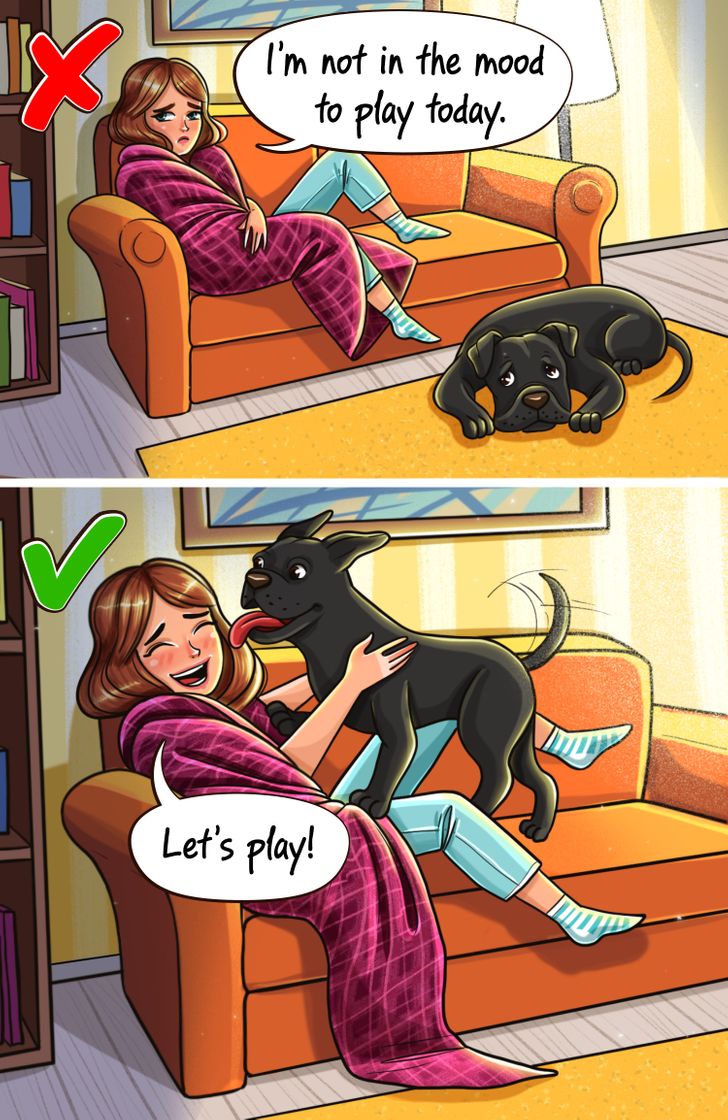
Research has also found that dogs reflect the mood of their owners. So if you’re stressed, chances are your furry friend is too. To determine this, scientists measured the levels of cortisol, the stress hormone, in both the owners and the animals that took part in the study. They basically found that the results were synchronized in both instances: people with high cortisol levels had dogs with equally high levels and people with low cortisol had dogs with low cortisol levels too.
These findings highlight just how strong the bond between people and their pets is. It also helps to raise awareness on how to better take care of our dogs’ health. We have to start by really caring about our own well-being. So, if you notice that your pet behaves out of place, you might want to ask yourself how you feel and look for ways to relax. Then the 2 of you will be able to continue enjoying your friendship to the fullest.
What other things do we normally do that could potentially stress our dogs out? What things help your little friend feel better? Of course, don’t forget that if you have any doubts or questions about your dog’s health, it’s better to go to the vet, just to be sure.
Comments
My grandparents have a nice dog. But the problem with this dog is that as soon as it gets outside, it loses its mind and tries to run anywhere it sees. Going for a walk with it is hard because it constantly pulls the least and almost chokes itself. And because of this I also can't remove the leash!
there is a nice thing for dogs, it's like a little jacket. You can use it instead of a least on its neck
It looks something like this
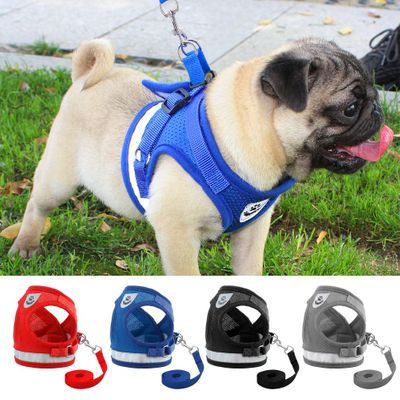
we have it too, but this dog really hates it. It even runs away when it sees it ?
what a pain with this dog ?
Related Reads
16 Useful Clues for Anyone Who Wants to Understand Dogs Better

“Screams Desperation,” Nicole Kidman, 56, Stuns in a Risqué Dress, But People Say It’s Not Age-Appropriate

Zac Efron’s Appearance a Few Days Ago Leaves Fans Shocked and Worried

A Woman Used Botox Because She Wanted to Look Like Her Younger Self, and According to People Online She Succeeded

Model Lost Entire Lips in Pitbull Attack, And She Reflects on Her Recovering Journey

Miley Cyrus Causes a Stir by “Leaving Nothing to the Imagination” as She Wears an Extremely Revealing Dress

15+ Moms Who Didn’t Want Pets in the House but Now Love Them to Death

Jennifer Lopez Faces Backlash as Users Notice Something Unusual in Her Bikini Pics

A Detail Spotted on Salma Hayek’s Breasts Sparks Big Controversy, as She Celebrates 57th Birthday

Jennifer Lopez Sparks Controversy After Posting Candid Photos of Ben Affleck

Tom Cruise Deemed Unrecognizable in New Pics With Prince William, as Some Say He Had “Too Much Surgery”

A Girl Born Without Nose, Who Was Called “Voldemort”, Proved Everyone Is Beautiful in Their Own Way
